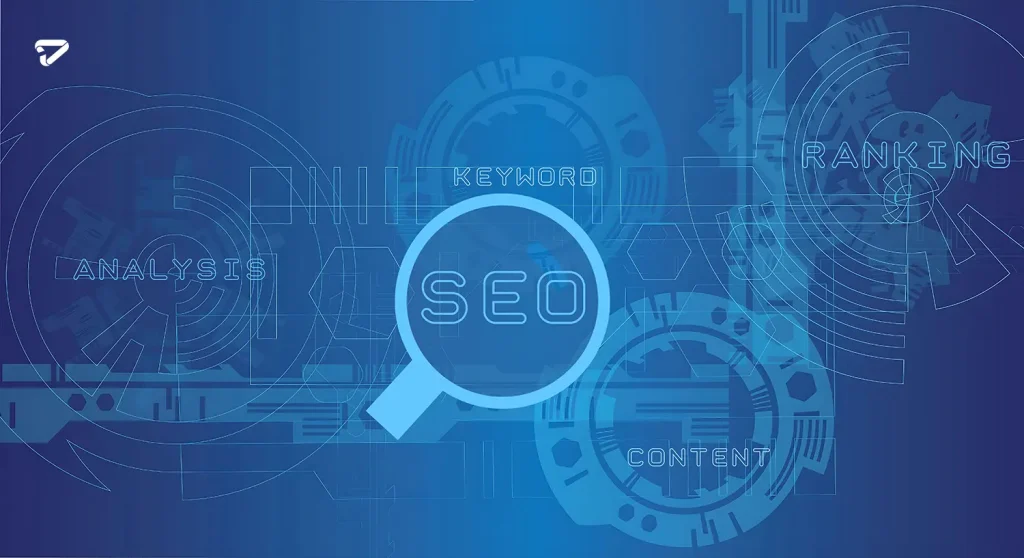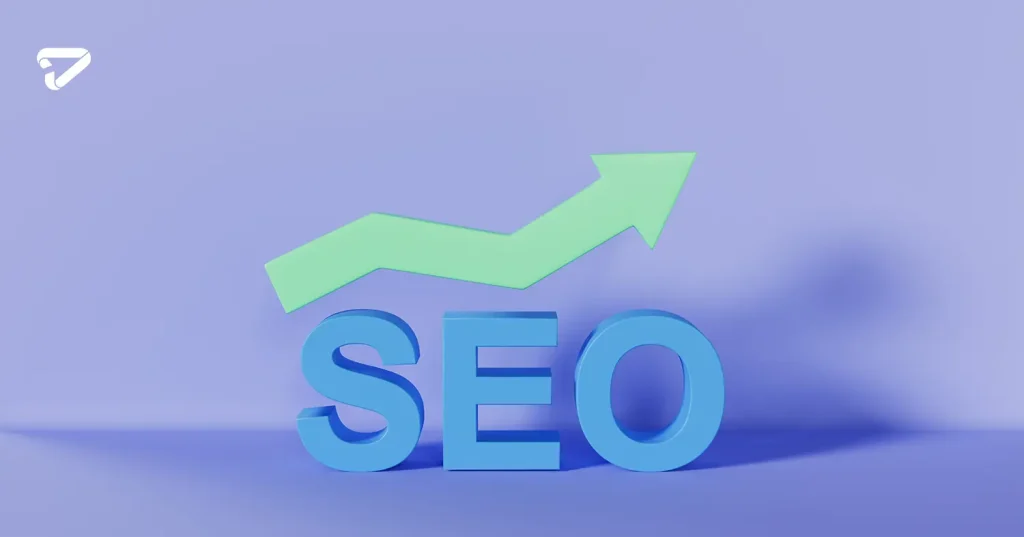
How to Rank on Google Without Breaking the Rules: White Hat SEO
White Hat SEO focuses on ethical strategies to enhance search engine rankings and provide long-term success.
In the ever-evolving digital landscape, search engine optimization (SEO) has become a crucial component for businesses to thrive online.
With billions of websites vying for attention, ranking high on search engines like Google can be the difference between success and obscurity.
However, not all SEO strategies are created equal, and some practices could land you in hot water with search engines.
Enter white hat SEO, the ethical and sustainable approach to optimizing your website for better visibility and higher rankings.
Unlike its black hat counterpart, which employs deceptive tactics that violate search engine guidelines, white hat SEO focuses on creating a positive user experience while adhering to the rules set by search engines.
In this comprehensive blog post, we’ll dive deep into the world of white hat SEO, exploring its benefits, strategies, and best practices.
Whether you’re a seasoned marketer or a small business owner just starting out, this guide will equip you with the knowledge and tools you need to rank on Google without breaking the rules.
Grey Hat SEO involves using strategies that are riskier and less ethical than White Hat SEO, which strictly adheres to search engine guidelines, but not as deceptive as Black Hat SEO.
to realise exactly what seo do read the what is seo article.
if you need more resources about white hat seo read the article in ahrefs.
The Importance of White Hat SEO
Before we delve into the specifics of white hat SEO, let’s address a common misconception: many believe that “gaming the system” is the only way to achieve top rankings.
This couldn’t be further from the truth. Not only do black hat tactics put your website at risk of penalties and potential de-indexing, but they also undermine the trust and credibility you’ve built with your audience.
White hat SEO, on the other hand, focuses on creating high-quality, user-friendly content that provides genuine value to your target audience.
By adhering to search engine guidelines and best practices, you’re not only increasing your chances of ranking well but also fostering a positive online presence that resonates with your customers.
A Success Story: How a Small Business Thrived with White Hat SEO
Let’s take a moment to illustrate the power of white hat SEO with a real-life example.
Imagine a small, family-owned bakery in a bustling city.
While their pastries and cakes were renowned among locals, they struggled to attract new customers and compete with larger chains online.
That’s when they decided to invest in white hat SEO.
They optimized their website for relevant keywords, created engaging blog content about baking tips and recipes, and focused on building high-quality backlinks from reputable food blogs and local directories.
Within a few months, their website started ranking higher for popular searches like “best bakeries in charlotte” and “custom cake orders.”
Not only did this increase their online visibility and attract new customers, but it also solidified their reputation as a trusted and authentic establishment in the community.
Understanding Google’s Ranking Factors
To effectively implement white hat SEO strategies, it’s essential to understand how Google ranks websites.
While the search engine’s algorithms are constantly evolving and highly complex, there are several key factors that play a significant role in determining your website’s ranking:
Content Quality
Google prioritizes websites that provide valuable, informative, and engaging content tailored to user intent.
High-quality, well-written, and regularly updated content is a cornerstone of white hat SEO.
Mobile-Friendliness
With the majority of internet traffic coming from mobile devices, Google heavily favors websites that are optimized for mobile viewing and provide a seamless user experience across different platforms.
Site Speed and Performance
Slow-loading websites not only frustrate users but also negatively impact your rankings.
Google values fast-loading, well-optimized websites that offer a smooth browsing experience.
User Experience
Google’s algorithms take into account various user experience factors, such as ease of navigation, clear website structure, and intuitive design.
A website that prioritizes user experience is more likely to rank higher.
Technical SEO
Aspects like proper use of headers, meta tags, alt text, and a clean URL structure contribute to a website’s technical SEO performance, which can significantly impact rankings.
Backlinks
While not the sole ranking factor, high-quality backlinks from reputable and relevant websites still play a crucial role in signaling authority and credibility to Google.
By understanding these ranking factors, you can develop a comprehensive white hat SEO strategy that aligns with Google’s guidelines and best practices.

White Hat SEO Strategies to Rank on Google
Now that we’ve covered the importance of white hat SEO and Google’s ranking factors, let’s dive into actionable strategies you can implement to boost your website’s visibility and rankings without resorting to shady tactics.
1. Keyword Research and Targeting
Effective keyword research is the foundation of any successful SEO strategy.
By identifying relevant keywords that your target audience is searching for, you can tailor your content and optimize your website accordingly.
Here are some tips for effective keyword research:
Use tools like Google Keyword Planner, Semrush, or Ahrefs to find high-volume, relevant keywords.
Analyze your competitors’ top-ranking pages and the keywords they’re targeting.
Consider long-tail keywords (phrases with three or more words) for more specific targeting.
Incorporate keywords naturally into your content, meta tags, and URLs.
Remember, keyword stuffing and other manipulative practices are considered black hat SEO and should be avoided at all costs.
2. High-Quality Content Creation
Content is king in the world of white hat SEO. By creating valuable, informative, and engaging content that resonates with your target audience, you not only improve your chances of ranking higher but also foster trust and credibility with your visitors.
When creating content, focus on:
Answering common questions and addressing pain points relevant to your industry or niche.
Providing in-depth, well-researched information that goes beyond surface-level content.
Incorporating multimedia elements like images, videos, and infographics to enhance the user experience.
Maintaining a consistent tone and voice that aligns with your brand.
Optimizing your content with relevant keywords, headings, and meta tags.
Additionally, consider repurposing and updating existing content to keep it fresh and relevant.
This not only saves time and effort but also signals to Google that your website is actively maintained and updated.
3. Technical SEO Optimization
While content and user experience are crucial, technical SEO optimization is equally important for ensuring your website is search engine-friendly.
Here are some key technical SEO elements to focus on:
Site Structure and Navigation:
Ensure your website has a clear, logical structure with easy-to-navigate menus and internal linking.
Mobile Responsiveness:
Optimize your website for mobile devices by implementing responsive design or creating a mobile-friendly version.
Page Speed: Optimize images, minify code, and leverage browser caching to improve page load times.
Indexability:
Use robots.txt and XML sitemaps to help search engines crawl and index your website efficiently.
Schema Markup:
Implement structured data markup to enhance your website’s rich snippets and appearance in search results.
By addressing these technical aspects, you not only improve your website’s user experience but also increase its visibility and rankings in search engines.

4. Link Building and Outreach
While content is the cornerstone of white hat SEO, link building and outreach are essential for establishing authority and credibility in the eyes of search engines.
However, it’s crucial to focus on quality over quantity when it comes to backlinks.
Here are some ethical link building strategies to consider:
Guest Blogging:
Contribute high-quality, well-researched articles to reputable blogs and websites in your industry, including a contextual link back to your website.
Broken Link Building:
Identify broken links on authoritative websites and suggest your relevant content as a replacement, offering value while earning a backlink.
Resource Link Building:
Create valuable resources, tools, or guides that other websites would want to link to as a reference.
Influencer Outreach:
Collaborate with influencers or industry experts to create co-branded content or secure mentions and backlinks from their platforms.
Remember, buying links, participating in link farms, or engaging in any other manipulative link building practices are considered black hat SEO and should be avoided at all costs.
5. Local SEO Optimization
If your business serves a specific geographic area, optimizing for local SEO can be a game-changer.
By improving your visibility in local search results, you increase your chances of attracting customers in your vicinity.
Here are some strategies for effective local SEO optimization:
Claim and Optimize Your Google Business Profile:
Ensure your business information, including address, phone number, and hours of operation, is accurate and up-to-date.
Include Location-Specific Keywords:
Incorporate your city, state
Include Location-Specific Keywords:
Incorporate your city, state, or region into your website’s content, titles, meta descriptions, and URLs to improve local relevance.
Acquire Local Citations and Listings:
Claim and optimize your business listings on popular directories like Yelp, Yellow Pages, and industry-specific directories.
Encourage and Respond to Reviews:
Positive reviews not only boost your local rankings but also build trust and credibility with potential customers.
Implement Schema Markup for Local SEO:
Use structured data markup to enhance your business’s appearance in local search results, including displaying your address, hours, and ratings.
By optimizing for local SEO, you can increase your visibility within your target geographic area, driving more foot traffic and local customers to your business.
6. Social Media Integration
While social media may not directly impact your Google rankings, it can indirectly contribute to your white hat SEO efforts in several ways:
Increase Brand Awareness and Visibility:
An active social media presence can help improve your brand’s visibility, reach a wider audience, and drive more traffic to your website.
Enhance User Engagement:
By encouraging user engagement through social media, you can foster a sense of community, gather valuable feedback, and create shareable content that could earn backlinks.
Influence Ranking Signals:
Social media signals, such as shares, likes, and comments, can contribute to ranking factors like authority, relevance, and user experience.
Integrate your social media channels with your website, encourage social sharing, and consistently produce high-quality, engaging content to leverage the benefits of social media for your white hat SEO strategy.
7. Stay Up-to-Date with Industry Trends and Updates
The world of SEO is constantly evolving, with search engines like Google regularly updating their algorithms and introducing new features.
To maintain a successful white hat SEO strategy, it’s essential to stay informed about the latest industry trends, updates, and best practices.
Follow reputable SEO blogs, attend webinars or conferences, and join online communities to stay ahead of the curve.
Additionally, monitor your website’s performance, track keyword rankings, and analyze user behavior to identify areas for improvement and adapt your strategies accordingly.

White Hat SEO Best Practice
While implementing the strategies outlined above is crucial for success, it’s equally important to adhere to white hat SEO best practices to ensure long-term sustainability and avoid potential penalties from search engines.
Here are some key best practices to keep in mind:
Focus on the User Experience:
At the core of white hat SEO is the commitment to providing a positive user experience.
Prioritize creating valuable, informative, and engaging content that resonates with your target audience.
Avoid Deceptive or Manipulative Tactics:
Steer clear of any tactics that aim to deceive search engines, such as cloaking, hidden text, or participating in link schemes.
Build a Strong Brand Presence:
Invest in building a strong, authentic brand presence online by consistently delivering high-quality content, engaging with your audience, and fostering trust and credibility.
Diversify Your Traffic Sources:
While SEO is crucial, it’s essential to diversify your traffic sources to reduce reliance on a single channel.
Explore other marketing strategies like email marketing, social media advertising, and influencer partnerships.
Monitor and Analyze Your Performance:
Regularly monitor your website’s performance, track keyword rankings, and analyze user behavior to identify areas for improvement and adapt your strategies accordingly.
By adhering to these best practices, you not only increase your chances of ranking well on Google but also establish a sustainable, long-term approach to online success.
The Role of User Experience in White Hat SEO
While technical SEO and content creation are essential components of white hat SEO, user experience (UX) plays a crucial role in your overall strategy.
Google’s algorithms are designed to prioritize websites that provide a seamless and enjoyable experience for users, ensuring they can easily find the information they’re looking for.
Improving your website’s UX can have a significant impact on your search engine rankings.
Here are some key areas to focus on:
Website Navigation and Structure
A well-organized website structure with intuitive navigation can greatly enhance the user experience.
Ensure that your website’s menus and internal linking make it easy for visitors to find the content they need.
Additionally, consider implementing breadcrumb navigation to help users understand their location within the site hierarchy.
Mobile Responsiveness
With the majority of internet traffic now coming from mobile devices, ensuring your website is mobile-friendly is essential.
Implement responsive design or create a dedicated mobile version of your site to provide an optimal experience for users on-the-go.
Page Load Speed
Slow-loading pages can lead to frustration and high bounce rates, negatively impacting your rankings.
Optimize your website’s performance by compressing images, minifying code, and leveraging browser caching to improve load times.
Accessible Design
Creating an accessible website that caters to users with disabilities or special needs is not only good practice but also aligns with Google’s guidelines for user experience.
Consider implementing features like alt text for images, proper color contrast, and keyboard navigation support.
By prioritizing user experience, you’ll not only improve your chances of ranking higher on Google but also foster a loyal and satisfied user base.

Measuring and Tracking White Hat SEO Success
Implementing white hat SEO strategies is just the beginning; measuring and tracking your success is equally crucial.
By monitoring the right metrics and analyzing your performance, you can identify areas for improvement, adjust your strategies, and ensure that your efforts are paying off.
Here are some key metrics to track and tools to help you measure your white hat SEO success:
Organic Traffic and Rankings
Monitor your website’s organic traffic and keyword rankings using tools like Google Analytics and rank tracking software like Semrush or Ahrefs.
Analyzing these metrics can help you understand the impact of your SEO efforts and identify opportunities for improvement.
Backlink Profile
The quality and quantity of backlinks pointing to your website play a significant role in your search engine rankings.
Use backlink analysis tools like Ahrefs, Moz, or Majestic to monitor your backlink profile, identify new link opportunities, and address any potential issues with low-quality or spammy links.
On-Page Optimization
Evaluating the effectiveness of your on-page optimization efforts is essential.
Tools like Screaming Frog or DeepCrawl can help you analyze your website’s technical SEO elements, such as meta tags, headers, and content optimization.
Conversion Rates and Engagement Metrics
While rankings and traffic are important, ultimately, your white hat SEO efforts should contribute to your business goals.
Track conversion rates, time on site, bounce rates, and other engagement metrics to understand how your SEO strategies are impacting user behavior and conversions.
By regularly monitoring and analyzing these metrics, you can make data-driven decisions, refine your white hat SEO strategies, and ensure that your efforts are yielding the desired results.
Integrating White Hat SEO with Other Marketing Channels
While white hat SEO is a powerful strategy on its own, integrating it with other marketing channels can amplify your results and drive even greater success for your business.
By taking a holistic approach and leveraging the strengths of various marketing tactics, you can create a cohesive and effective online presence.
Content Marketing
Your white hat SEO efforts and content marketing strategy should go hand-in-hand.
By creating high-quality, valuable content that addresses your target audience’s needs and incorporates relevant keywords, you can improve your search engine rankings while also building brand authority and fostering engagement.
Social Media Marketing
While social media may not directly impact your Google rankings, it can indirectly contribute to your white hat SEO efforts by increasing brand awareness, driving referral traffic, and facilitating content promotion and sharing, which can lead to more backlinks and engagement.
Email Marketing
Integrating your email marketing campaigns with your white hat SEO strategy can help you nurture leads, maintain relationships with existing customers, and promote your optimized content and offers.
This can lead to increased website traffic, engagement, and conversions.
Influencer Marketing
Collaborating with industry influencers and thought leaders can provide valuable opportunities for content creation, backlink acquisition, and social media amplification, all of which can support your white hat SEO efforts.
By seamlessly integrating white hat SEO with other marketing channels, you can create a cohesive and powerful online presence, reach a wider audience, and drive sustainable growth for your business.

The Importance of Staying Compliant with Search Engine Guidelines
While the benefits of white hat SEO are clear, it’s crucial to remember that search engines like Google have strict guidelines in place to maintain a level playing field and provide the best possible experience for users.
Failing to comply with these guidelines can result in penalties, manual actions, or even complete deindexing of your website.
To ensure your white hat SEO efforts remain compliant and sustainable, it’s essential to stay up-to-date with the latest search engine guidelines and best practices.
Here are some key areas to focus on:
Avoiding Deceptive Practices
Search engines have zero tolerance for deceptive practices such as cloaking, hidden text, or doorway pages.
These tactics aim to manipulate search engine algorithms and provide a misleading experience for users, which is strictly prohibited.
Maintaining Transparency
Transparency is a core principle of white hat SEO. Be upfront about any sponsored content, affiliate links, or advertising on your website.
Clearly disclose any paid relationships or partnerships to maintain trust with your audience and avoid potential penalties.
Adhering to Webmaster Guidelines
Both Google and Bing provide detailed webmaster guidelines that outline best practices for SEO, website structure, and content creation.
Familiarize yourself with these guidelines and ensure your strategies align with their recommendations.
Monitoring Algorithm Updates
Search engines like Google regularly update their algorithms to improve the user experience and combat spam or manipulative tactics.
Stay informed about these updates by following reputable SEO blogs, attending industry events, and monitoring your website’s performance for any significant changes.
Seeking Professional Guidance
If you’re unsure about the compliance of certain SEO practices or need guidance on navigating search engine guidelines, consider seeking advice from experienced SEO professionals or consulting with the search engine’s support resources.
By prioritizing compliance and adhering to search engine guidelines, you not only protect your website from potential penalties but also ensure that your white hat SEO efforts are sustainable and effective in the long run.
Leveraging Data and Analytics for White Hat SEO Success
White hat SEO is not a one-size-fits-all approach; it’s an ongoing process that requires continuous monitoring, analysis, and optimization.
Leveraging data and analytics is crucial to making informed decisions, identifying areas for improvement, and maximizing the impact of your white hat SEO strategies.
Google Analytics: Your Secret Weapon
Google Analytics is a powerful and free tool that provides invaluable insights into your website’s performance, user behavior, and traffic sources.
By setting up goals, tracking conversions, and analyzing data such as bounce rates, time on site, and page views, you can better understand how your white hat SEO efforts are influencing user engagement and conversions.
Interpreting and Applying Data Insights
While collecting data is essential, interpreting and applying those insights is where the real value lies.
Look for patterns, trends, and anomalies in your data, and use that information to inform your content strategy, technical optimizations, and overall SEO approach.
For example, if you notice that certain pages have a high bounce rate, it may indicate that the content is not resonating with your target audience or that there are usability issues that need to be addressed.
Alternatively, if you see a spike in traffic from a particular referral source, you can explore ways to cultivate more backlinks from similar sites.
A/B Testing and Experimentation
Don’t be afraid to experiment with different strategies and tactics within the realm of white hat SEO.
Conduct A/B tests to compare the performance of different page layouts, content formats, or optimization techniques.
This data-driven approach will help you identify what works best for your audience and continuously refine your efforts for maximum impact.
Integrating Analytics with Other Tools
While Google Analytics is a powerful tool, it’s often beneficial to integrate it with other SEO and marketing tools to gain a more comprehensive understanding of your online presence.
Tools like Semrush, Ahrefs, and Moz can provide valuable insights into your backlink profile, keyword rankings, and competitive landscape, which can be combined with your analytics data to inform your overall strategy.
By leveraging data and analytics, you can make informed decisions, identify opportunities for improvement, and continuously optimize your white hat SEO efforts for sustainable success.

Conclusion
In the ever-competitive digital landscape, white hat SEO is no longer an option – it’s a necessity.
By following ethical and sustainable practices, you can rank on Google without compromising your integrity or risking penalties from search engines.
Remember, white hat SEO is a marathon, not a sprint. It requires patience, dedication, and a commitment to creating valuable, user-focused content.
However, the rewards are well worth the effort, as you’ll not only achieve higher rankings but also build a strong, trustworthy brand that resonates with your target audience.
Embrace the power of white hat SEO, stay up-to-date with industry trends, and never underestimate the value of providing an exceptional user experience.
With Danabak Agency persistence and a strategic approach, you’ll be well on your way to achieving sustainable success in the ever-changing world of search engine optimization or seo in charlotte.
FAQs
1. What is white hat SEO?
White hat SEO refers to the ethical and sustainable practices of optimizing a website for better visibility and rankings on search engines like Google, while adhering to the search engine’s guidelines and prioritizing a positive user experience.
2. Why is white hat SEO important?
White hat SEO is crucial because it helps you rank higher on search engines without risking penalties or de-indexing for violating guidelines.
It also builds trust and credibility with your audience by providing valuable, user-friendly content.
3. How long does it take to see results from white hat SEO?
The timeframe for seeing results from white hat SEO can vary, but it typically takes several months of consistent effort and high-quality content creation to start seeing improvements in rankings and organic traffic.
4. Can I buy backlinks as part of my white hat SEO strategy?
No, buying backlinks is considered a black hat tactic and should be avoided.
Focus on earning high-quality backlinks naturally through tactics like guest blogging, broken link building, and creating shareable resources.
5. Is social media important for white hat SEO?
While social media may not directly impact Google rankings, it can indirectly support your white hat SEO efforts by increasing brand awareness, driving referral traffic, and facilitating content promotion and sharing, which can lead to more backlinks and engagement.








